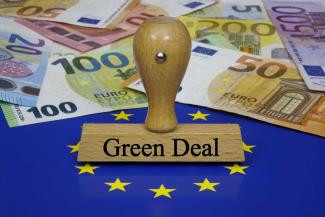Sustainable financing
Huge financial needs

To implement the Green Deal, substantial investments in sustainable activities will be required (EC, 2019a). Estimates vary concerning the amounts required. According to the UN Conference on Trade and Development (UNCTAD 2014), the developing countries need an annual $ 2.5 trillion more than is made available to achieve the Sustainable Development Goals (SDGs).
Such sums cannot be provided by governments alone. For the transition to a more sustainable economy substantial private investment will be needed as well.
One of the greatest problems for mobilising private capital is the absence of harmonised standards for defining and verifying sustainable financial instruments (see main text). Other obstacles are a general lack of transparency and the different levels of information of investors and debtors. Due to a lack of transparency and disclosure it is difficult for regulators, non-governmental organisations and researchers to assess sustainable financial instruments.
Moreover, relatively long-term sustainable investment projects do not fit the short-term time thinking of many savers and investors. Political risks are relevant too, including the lack of strategic direction, sudden national political changes, regulatory shifts or biased policymaking (Berensmann et al., 2017).
In developing countries, further difficulties arise from poorly developed capital markets with only rather few sustainable financial products. Moreover, they typically have too few investors, too little technical expertise and insufficient institutional capacities for evaluating financial products.
References
EC, 2020b: A roadmap for recovery. Towards a more resilient, sustainable and fair Europe. Brussels, 21.04.2020.
UNCTAD, 2014: World Investment Report 2014. Investing in the SDGs: An Action Plan. United Nations Publications, Geneva.












